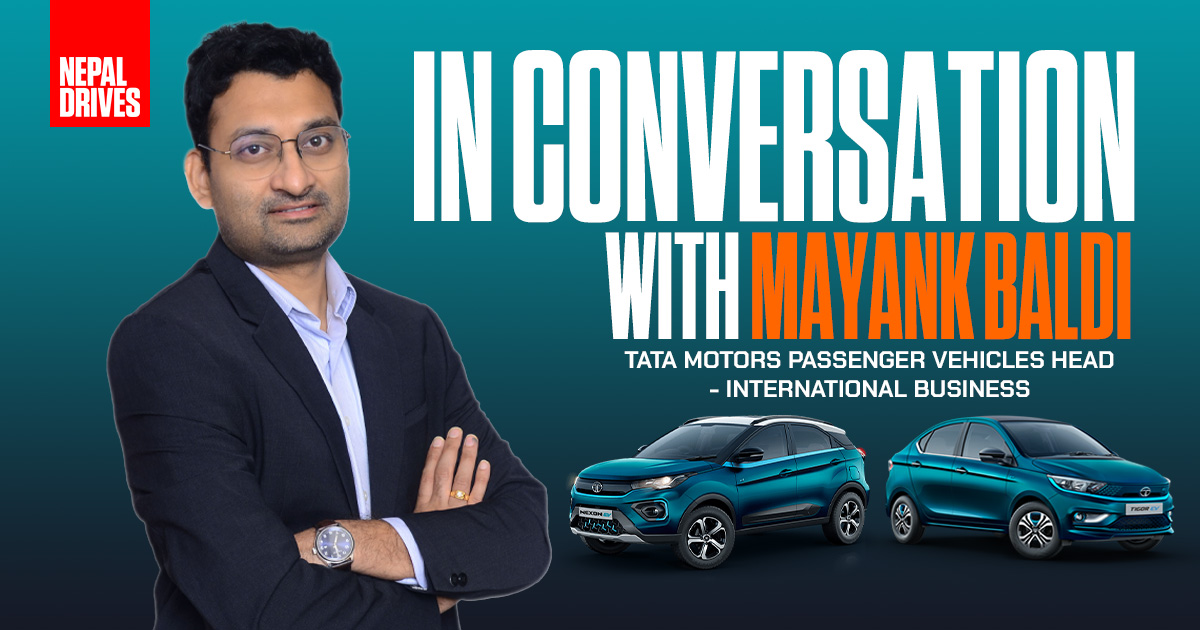The recent sales figure for your EVs has been positive for the Nepalese EV industry. How do you view EVs evolving in the passenger vehicle segment in Nepal?
The prospect of EVs in Nepal has improved significantly in the past few years. Pre-COVID, at around 2019/20, EV penetration was at around 5% in Nepal, with only a few OEMs offering electric vehicles. However, with the introduction of EV conducive policies and the launch of TATA Nexon EV and Tigor EV, that all changed. By 2021/22 the EV penetration percentage had reached 14%.
If the current EV-conducive policies are sustained, and there is improvement in supplies, we can expect EV penetration to double and reach 30% by 2022/23. Furthermore, considering the increased fuel price, upcoming hydro projects along with the pipeline of new product announcements in the EV space, I won’t be surprised if EV penetration crosses 50% by 2023/24.
What are the steps undertaken by Tata Motors to accelerate the adoption of EVs in Nepal?
One of the many things we need to consider when buying an electric vehicle is that you’re not just buying the product, you’re buying the entire ecosystem. This is why, prior to the product launch, we worked extensively on readying our ecosystem.
Thankfully, our partners, Sipradi, committed good investments in the installation of Fast Charging stations, dedicated service network points across Nepal, upskilling and technology transfer to the front-end sales and service team, and many other market enablers.
As of today, we have the largest network of 16 fast charging stations with the capability to charge vehicles from 0% to 80% in just 60 minutes, located at every 150 KM distance, connecting all major highways. More than 100 AC charging ports have been installed in convenient locations such as showrooms, service centers, malls, hotels, restaurants and hospitals. These are helping customers to top up their battery charge for immediate needs.
Moreover, Sipradi’s extensive service network provides service to our EV customers through 15 Service centers across Nepal. We have also upgraded all EV workshops with battery handling, testing equipment and software upgrade tools.
Finally, in order to focus on best-in-class customer experience, we developed an in-house charging app, EZ (Easy) in both android and iOS versions. EZ (Easy) Charging is a Smart EV Charging Solution that helps TATA EV drivers/ owners to locate charging stations as well as charge their EVs on the go.
The Nepalese market is very competitive with a mix of diverse players across a varied price range. What are you doing to compete?
Our biggest competitive advantage lies in our capable product line up which has been designed & tested rigorously for different customer requirements, roads, and climatic conditions of our active markets. For example, the Nexon EV performed a successful comprehensive IMT (In Market Testing) in Nepal prior to its launch for market evaluation and feedback study.
TATA Motors EVs have been gaining popularity in Nepal due to multiple factors like bold and aspirational design, highest standards of safety, uncompromised features, class-leading performance, attractive pricing and a wide network of charging & service infrastructure. Going forward, we will continue to focus on improving customer experience through better reach and quality of our network, dedicated EV Bays, digital solutions and new product introductions.
Nexon has become one of the highest-selling brands in Nepal. How do you feel about Nexon’s success here in Nepal? Any new plans with Nexon for the Nepal market?
We are really happy with the success of Nexon EV in Nepal. To celebrate this success, we will be offering value-added features to all our existing Nexon EV customers, such as multi-mode re-gen, cruise control, and an indirect tyre pressure monitoring system (iTPMS) on a free-cost basis. A campaign announcing the terms and conditions of this service will be announced soon as well.
What have been the key learnings from the Nepalese EV sector?
Government incentives play a key role in the faster adoption of EVs and we would like to take this opportunity to thank the Nepalese Government for its active role in promoting a sustainable policy framework for EVs.
Also, the market enablers for EV adoption in terms of changing consumer trends, preference towards sustainable mobility solutions, affinity towards the latest technology, customer awareness and orientation towards EVs are all country-specific and with the current parc of 1000+ vehicles on the road, we have captured good inputs from our customer. The data analysis will help us customize future product offerings.
Developing a strong and robust charging ecosystem is key to reducing the range anxiety of customers. Even though less than 40% of our customers use our fast-charging infrastructure, it has played a major role in creating a sense of relief for our customers.










